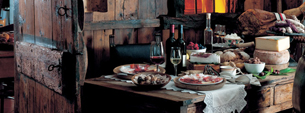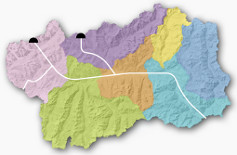The Honey
The mythological food of the gods, a 'rainbow' of tastes and virtues.

In Valle d’Aosta, beekeeping is now a fully recognized agricultural activity. The constant commitment of producers is adding value to the native honey which, when worked following the ancient methods, does not undergo any thermal treatment, maintaining, therefore, its unvaried organoleptic properties.
Its unmistakable purity originates from the diverse mountain environments and is the result of a prevalently nomadic form of beekeeping, which involves the hives being moved from the bottom of the valley to higher altitudes to allow bees to 'bottinare', that is, to collect nectar and pollen from many botanical species; in this way a mixture of flavors is created, with appealing characteristics to suit the taste of many consumers.
The Rhododendron Miel du Val d’Aoste, clear with a tendency to form fine crystals, delicate and soft, is ideal to be consumed on its own, or with rye bread and butter or to sweeten herbal teas.
The Chestnut honey,darker and with a slightly bitter aftertaste, goes well with boiled chestnuts or with matured cheeses.
The Millefiori (thousand flowers) mountain honey is rich in nectariferous essences which characterize its color and intense taste.
The Taraxacum Honey , with its intense yellow color, has a sweet taste, with a highly valued ammoniacal aftertaste; Linden Honey, with its pure and light amber color, releases a slightly minty aftertaste; Honeydew Honey (dark color) has a fruity taste.
The protection of the production is under the care of the 'Consorzio Apistico della Valle d'Aosta' (Valle d'Aosta Bee Consortium), sales are carried out by the 'Miel du Val d’Aoste' cooperative or by the beekeepers themselves.












